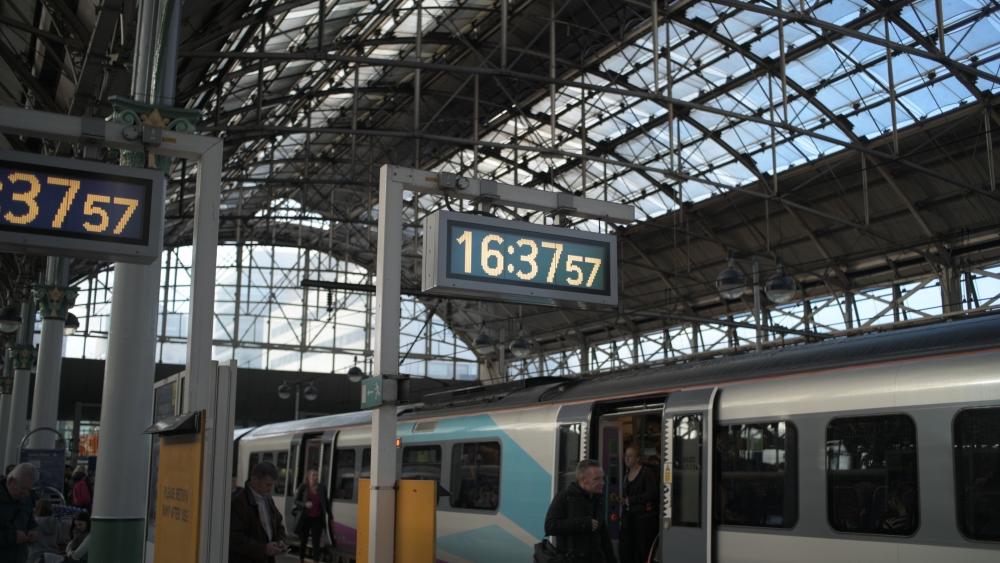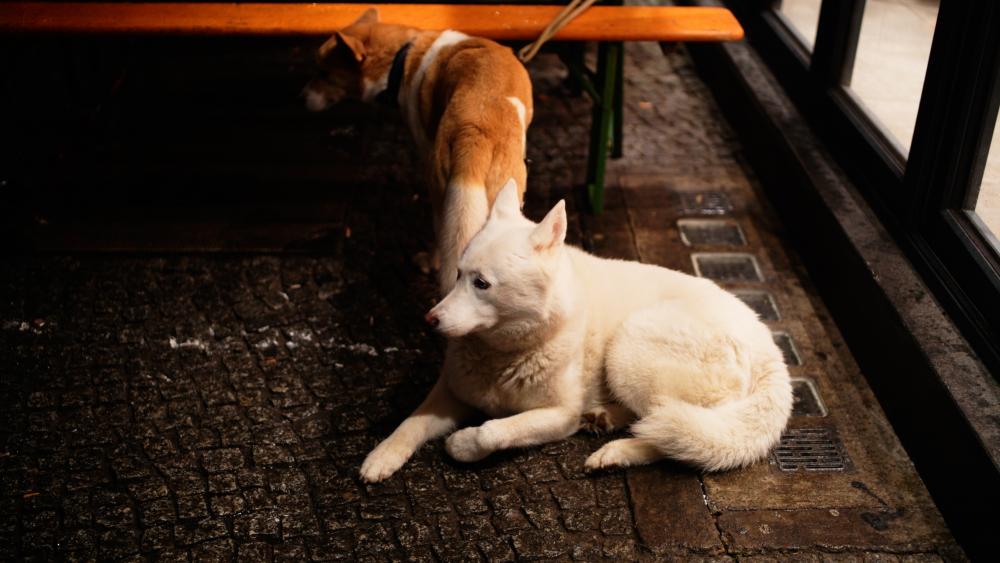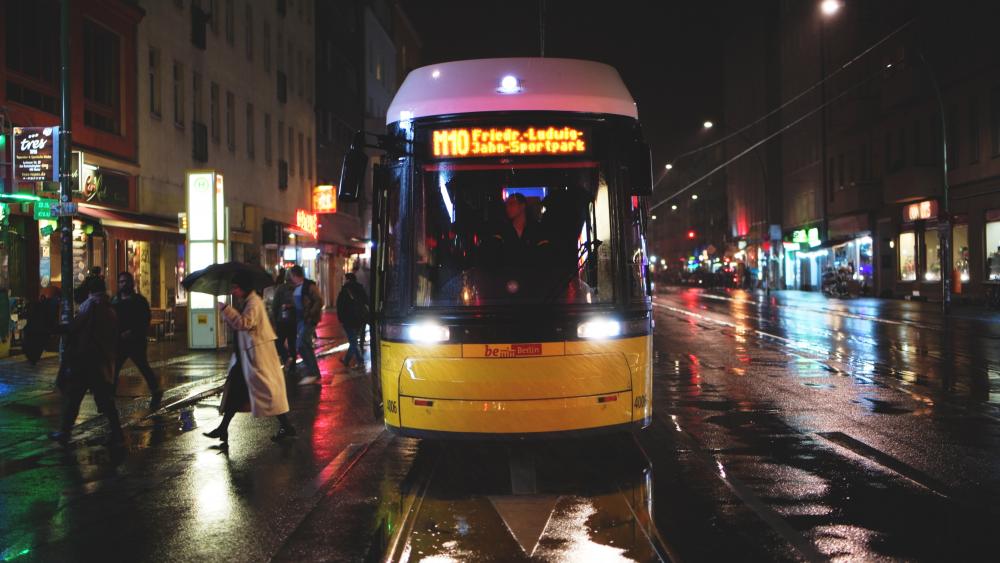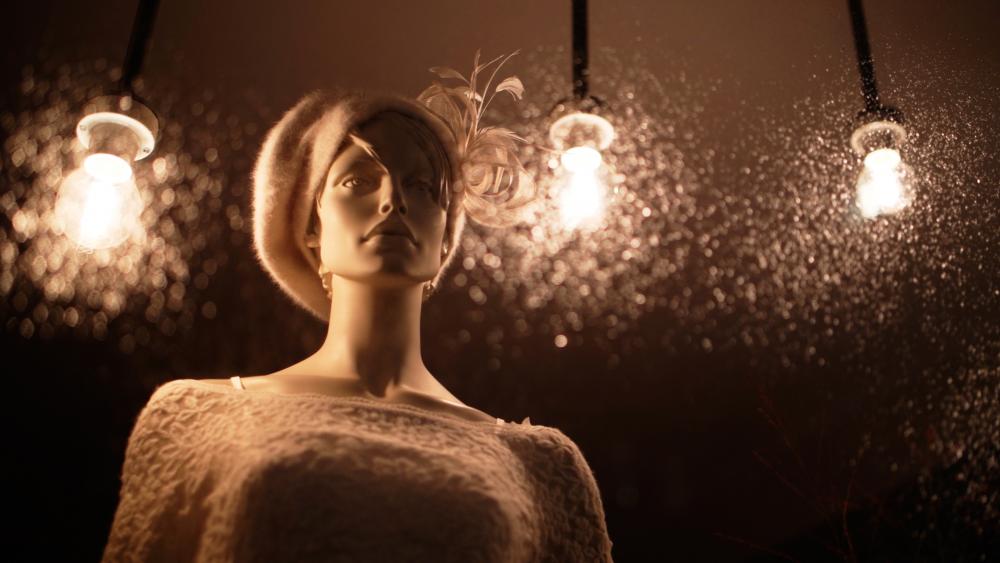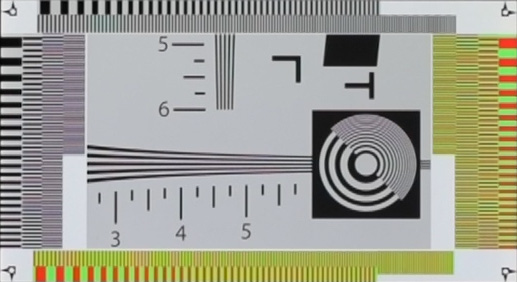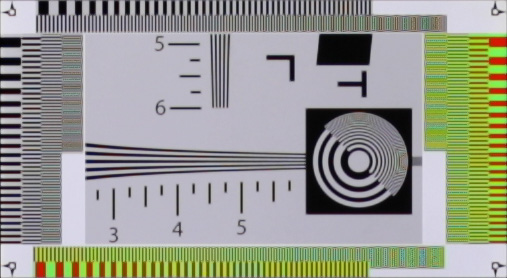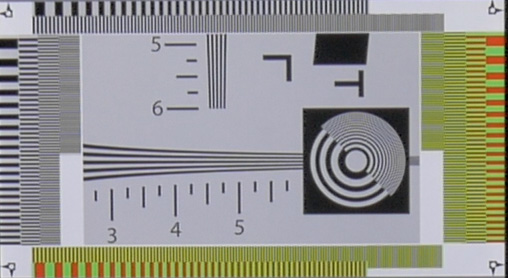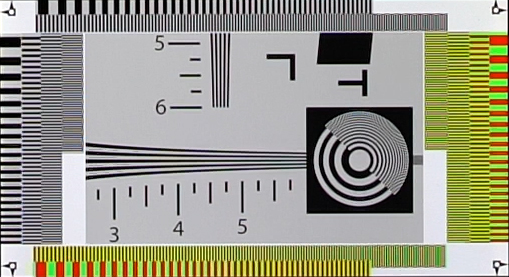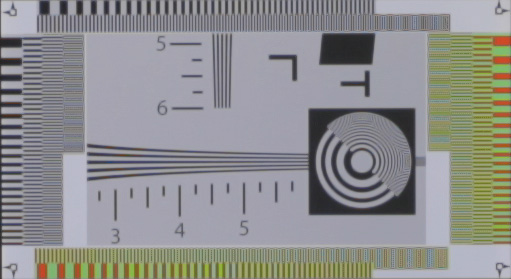-
Posts
15,599 -
Joined
-
Last visited
Content Type
Profiles
Forums
Articles
Everything posted by Andrew - EOSHD
-
Yes. Literally twice as good as the Sony cameras in that respect.
-
These are not hard rules but I have some suggestions for making the place easier to read and less cluttered... 1. Please don't quote an entire post or topic as the next reply directly underneath... We know you're replying to it, we don't need to see the same big post repeated 2 times in a row.... If your post is on the same page, people usually see the content you're referring to and the context. If there's a big post with 6 images for example, and you quote it in the very next reply... think about how stupid that looks to the reader. 2. Please try to avoid putting signature text in the main body of your post like "CTB Approved". Put it in the signature of your account profile. That way, it can be formatted separately (smaller, with divider) to the main post text in keeping with the forum design - easier to read for us all. 3. This is a place to discuss camera gear, filmmaking and films! If the main purpose of your account is to promote a service, product or another blog or YouTube channel, then it will be deleted. I want to see real people, with great posts like Mattias Burling, actual organic users with things to say and not a heavy bias or promotional bias towards one thing, or one brand. 4. This forum prefers people who post under their real name, rather than the name of their channel, online presence or a nickname. 5. If your topic is a question please search first before posting it, so regular visitors don't have to read the same questions every day that have already been answered before. 6. If a rumors site posts news, link to the ORIGINAL SOURCE of the news, NOT the rumors site. Save us all the bother, go direct to the source and bypass all those ads. 7. If you are selling products and services that rival EOSHD's, I will allow it only at my discretion. Charging $100 for a picture profile I don't like, that is of low quality and in direct competition with my own, is a certain ban. 8. Please be civil to myself and the mods - because we're here every day and getting heckled everyday isn't what I run this site for! It's the quickest way to get banned. 9. I am all for blunt, non-politically correct chat, banter and forthright opinions, just be respectful of each-other 10. Post good stuff that starts a discussion... leave the boring stuff to the other sites These are guidelines not the law... I will as always be casually keeping an eye out for people who flout multiple guidelines regularly as I want to maintain the quality of the community for the regulars. Cheers!
-
The D750 is great for 1080p Mattias. Like D500 but full frame. The AF for stills is still pretty good, too. I wonder if DPReview shot the 4K chart in 30fps and not 24fps, and it's possible a harsher pixel binning is in action creating more aliasing in that mode than in 24p... Because what is a bit weird is that the A7R II looks identical to the A99 II in full frame 4K, whereas to my experience the A99 II was an improvement... The D850 is a further improvement with the updated sensor, it has less moire and false detail than my A99 II in a real-world head-to-head but oddly on the DPReview 4K chart scene it shows more stair-stepping / aliasing. I honestly hardly notice it in everything I've shot so far on mine! (24p, full frame 4K) I'm not too hung up on these chart results, but each to their own! BTW Download the JPEGs from DPReview of the 4K chart scene for the D850 and Samsung NX1 https://***URL removed***/reviews/image-comparison/fullscreen?attr29_0=nikon_d850&attr29_1=samsung_nx1&attr72_0=4k&attr72_1=4k&normalization=full&widget=555&x=-0.36881169178973144&y=-0.6556811913954771 The NX1 is one of the most alive and sharp 4K cameras around. I've always loved the image. The D850 4K frame-grab in JPEG format viewed full screen looks more detailed than the NX1, which is really surprising, but yes it does have more stair-stepping on some parts of the chart and the purple false color on the fine black & white stripes. Again though, in real world, it's practically a non-issue.
-

New EOSHD Pro Color 3.0 and EOSHD Pro LOG comes to Sony cameras
Andrew - EOSHD replied to Andrew - EOSHD's topic in Cameras
Hey Israel, please upload the video to YouTube or Vimeo so we can have a look at it. As a forum attachment, it's a bit too big. -
Dude, the resolution in 4K of the D850 is as good as the 1D X Mark II / 1D C... https://***URL removed***/reviews/image-comparison/fullscreen?attr29_0=nikon_d850&attr29_1=canon_eos1dxii&attr72_0=4k&attr72_1=c4k&normalization=full&widget=555&x=-0.585179526355997&y=0.08446496469310162 What's not to like. I don't tend to quibble over small resolution differences at 4K on charts anyway....Why? At this level, resolution is already so more than you really need even for cinema screenings, yes, and even in 2017. I don't care whether it is effectively 4K or 3.8K or even 3K. At 1080p, I can quibble all I like! (Oh and 1080 on the D850 is superb by the way). The D850's 4K resolution is nothing to be sniffed at. There's some purple false colour on the D850 chart (like ALL the other Nikon cameras, funnily enough) but the actual level of detail and especially real-world detail is a match to the 1D C. Yet on the Nikon you are getting more for your money and fixing the lovely 1D C's biggest downsides (lack of articulated screen and unworkably large file sizes). The colour and white balance are superb and the image pipeline, processing and codec are top notch, as good looking as the Canon. You're getting a smaller form factor, lighter body, better stills, articulated screen, cheaper price and 4K file sizes that are actually practical... The 1D X Mark II only has two advantages and certainly not the codec - it is less rolling shutter and of course Dual Pixel AF yet films have been shot with manual focus since the start to the present day and there's a reason for that. AF still isn't bullet proof or organic looking enough... It's nice to have, it's practical and convenient for run & gun, but it isn't cinema and you don't actually need it for most cinematography. What's more you need to put chart tests into context. If there's some purple false colour on very fine black and white circles and lines at DPReview, but these things never occur outside of charts, then what is more important is that A) it looks nice when you point it at REAL STUFF and B) it does 4K from an 8K sensor!! - a huge technical achievement and gives you the benefit of 46MP stills, which the Sony A9 and 1D C simply cannot compete with. Then there is the Nikon flat profile and colour science, which is superior to Sony, and even superior to Canon in terms of some subjects. A9 does not have a C-LOG-like profile nor can you add one. No S-LOG. No EOSHD Pro Color. Just the standard crap Sony colour. The codec is also very good on the D850... Higher bitrate than the Sonys and cleaner shadows, smoother to edit and better looking grain. There is also the fact that low light performance is excellent considering the 46MP count sensor and superior ergonomics to all the Sony cameras, superior to the A99 II as well, which I actually liked more than the A9. The D850 is a much better stills camera than both of them. Oh and it is full frame... So that look, in the real world, trumps anything minor that appears on a fucking chart.
-
See what I mean, you say I can't debate related-topics to climate change...you tell me that the only topic is whether climate change is happening or not. Binary thinking my friend... It's not good. Cleaner solar energy for example is a prevention method, one of many to consider. It's not a separate topic at all, it's all part of the topic of climate change. Once you add up all the elements it's a very complicated subject and one that can't be debated from two polar opposite sides. Which is exactly what our media and politicians have turned it into. The uncertainty comes when you try to consider the truth! Rather than simply being swayed by binary thinking, tribal behaviour and where on the political spectrum you consider yourself to be.
-
Most of the discussion in this thread proves my point that climate change isn't up for debate and very good science will be ignored as a result. As a liberal creative person I can't even so much as ask a damn question, let alone consider arguments outside my liberal bubble, without the finger pointing of moral condemnation from fellow liberals. When the simple act of considering some related issues and problems is considered "denial", followed by a lot of frenzied arm-waving idignation and accusations of being alt-right, that is a major problem - and we see it in our politics every day. This is really unhelpful if the human race is to solve the issues of managing our climate and understanding it better. Today, we either fit in one camp or the other. To satisfy a consensus you have to either flat out deny climate change exists, or claim that it is all proven, settled and we know everything. Anything else is heresy. The fact is we don't know it all... we aren't considering some related issues and problems with clean energy sources and impact on agriculture, farmers, food and lives. This is too complex a problem to pledge allegiance to one of just two opposing dumb football teams and attack it with a tribal mentality. It's sad to see people do so on this thread without even having watched the film.
-
D810... You may as well get the D750... It does the same video quality and the stills aren't far off. Same mojo with colour. Handling maybe even a little bit more straight forward. In fact for just 1080p the D750 has always been nice. I'd use it over the D500.
-
Don't do it The crop is murder. The image is decent in 4K but it's overpriced for what it is. The D850 runs rings around it for both stills and video. Full frame is something else.
-
The science is far from settled, for example on the topic of renewables and the management of food, land and the agricultural economy. Further research is needed there to gauge the impact losing all that land to wind farms will have on food supply. Furthermore, it's interesting to hear what Freeman Dyson says in the film about the computer models - that they are a good tool for understanding the climate but a bad tool for predicting it. I'm no climate change denier but the discussion is getting way too dogmatic on both sides of the fence.
-
That clock one is the only one I didn't grade, straight out of the camera to show the dynamic range, so grade-away...
-
"Are we doing the right thing?" That's the question The Uncertainty Has Settled explores, and you may ask yourself the same thing about shooting Magic Lantern for the big screen! Crazy or inspired? My friend in Berlin, Volker Schmidt was behind the camera on this film, and the decision to shoot Magic Lantern raw video on the 'vintage' 5D Mark II... Read the full blog post
-
RS is similar to all the other cameras. GH5 still king for minimal rolling shutter. You know, until now there hasn't been a camera like this... It is a 1D C image in a body with much better video features... articulated screen, fast FPS live-view, small file sizes... It fixes all of the 1D C problems and even the 1.3x crop is gone. For that reason alone it gets my respect. Sure, a Sony or Panasonic mirrorless camera is going to be better for certain tasks, especially handheld video shooting (5 axis) or VFX (10bit codec on GH5) But the D850 is that rare mix of full frame pro-level stills and cinematic 4K quality with no real issues. It is a full frame and pro-level stills camera with 50 years of colour science behind it. Is this offered elsewhere? Fuji? No. Panasonic? No. Canon? 1D C and 1D X II are closest. Sony? Close but no cigar. At the very most basic level I wanted a 1D C with flippy screen and smaller file sizes and now I have it Of course if Nikon did put this technology into a mirrorless system it would be a big rival to the A7R II and A7S II or whatever Sony brings out next, but I don't trust them not to fuck it up. The first casualty of shoehorning the D850 into a mirrorless body would be the D5 autofocus system for stills. They would need a new sensor, one with Dual Pixel AF. Not even the GH5 has video AF to match Canon and in stills it's better but still not D5-good. I also think that an investment in Nikon mirrorless glass, the probable small selection at launch and the cost is quite off-putting just to get AF, when you can manually adapt a bunch of other nice stuff to a mirrorless mount - but then you are back to manually focussing not just in videos, but in stills as well which is a real deal-breaker for me. Sometimes it's a case of 'be careful what you wish for'. The best thing Nikon could do is collaborate with Metabones and make a EF adapter giving Dual Pixel AF level performance in live-view and video for their mirrorless camera, as live-view is critical on such a system, without an OVF, relying on only EVF / LCD.... Then make the entry-level Nikon mirrorless lenses affordable enough for the layman to switch over relatively quickly (a cheap fast 50, a decent zoom and a fast 35 or 28). This of course is about as likely to happen as Leica going into the sub $2000 camera market
-
-
You're completely missing the bigger picture, literally. The A7R II Super 35mm is fine, but it isn't full frame. The GH5 is not full frame. The D850 is full frame 4K and much better than the A7R II's full frame 4K, better horizontal res and less moire, it's better even than the A99 II full frame 4K which I am very happy with and which was an improvement on the A7R II's image. The codec and colour science are superior to the Sonys. The sensor size and stills are superior to the GH5.
-
Yes best screens and sound in Berlin but the audience can be exasperating. I do prefer the atmosphere in the smaller cinemas. It's almost as if people go to them to actually watch a film rather than to date, eat, piss, fight, or whatever it is the normal fucking ferrel human being likes to do instead of watching films.
-
Hard to argue with Slashcam's results but you will notice in 4K FX the horizontal resolution is very good indeed. This counts for a lot in the real world. This is not a moire camera. It may show some on a chart, yes. All do. I very much doubt it is line-skipping. The results would be much worse if it was. The difference in real-world resolution between the full frame FX mode and Super 35mm is tiny. The other advantages over Sony outweigh the difference in res anyway... better codec for starters. D850 FX 4K: 5D Mark IV 1.7x crop 4K: You will see that the D850 actually out-resolves the 1:1 full pixel readout of the 1.7x crop 4K on the 5D Mark IV horizontally... And that the Canon 4K has worse moire issues... even without binning or line skipping. So whatever the D850 pixel binning is doing from 46MP down to 8MP for 4K it is doing it well enough as to not be noticeable in the real-world vs a 1:1 readout... Very impressive. Let's throw in the A7S II, 1D C and GH4 as well... 1D C... Soft, and moire patterns especially horizontally.... A7S II full frame 4K... Still moire. Oversharpened PP settings used though. GH4... Moire present again! These all look worse than the Nikon's 4K in this test and as we know, in the real world they offer some of the best images around. https://www.slashcam.de/4K-Kamera-Vergleich-u-show_von-i-49-u-mode-i-docompare.html
-
I watched it at the Sony centre, Cinestar and they had an interval less than half way in where they flash up an advert for ice cream and everybody waits around in the light for 10 minutes or goes to the bathroom. Really improves the atmosphere of the film! Not! Apart from that the cinema is nice. Apart from the people... And the advertising... And the ticket prices (14 euros) They also have it on the larger IMAX screen there too.
-

EOSHD+SamsungNX1+SLRMagic=Feature Film Distribution
Andrew - EOSHD replied to D.M.Weiss's topic in Cameras
Congratulations, what an achievement! I watched the trailer, but couldn't watch the whole film as it isn't available in my location Is it US Amazon only? -
Hold on guys. If anyone is going to create my profile as a LUT and put it on EOSHD shouldn't it be me?!
-
I enjoy reading your posts but I think it's time to say - you don't need to press enter at the end of every line when you post on here. It will wrap around automatically like this... And this is much easier to read.
-
There's quite a lot of product placement in the movie... Sony, Atari, Peugeot, Jonny Walkers and more, so that will have paid for some of the marketing efforts at least. There's far too much greed involved and if the movie would have been made for $20m on Netflix it would have been just as good, provided they had the same core crew and cast.
-
You will notice there are anamorphic shots in it, but without a spoiler, I can't get into specifics





